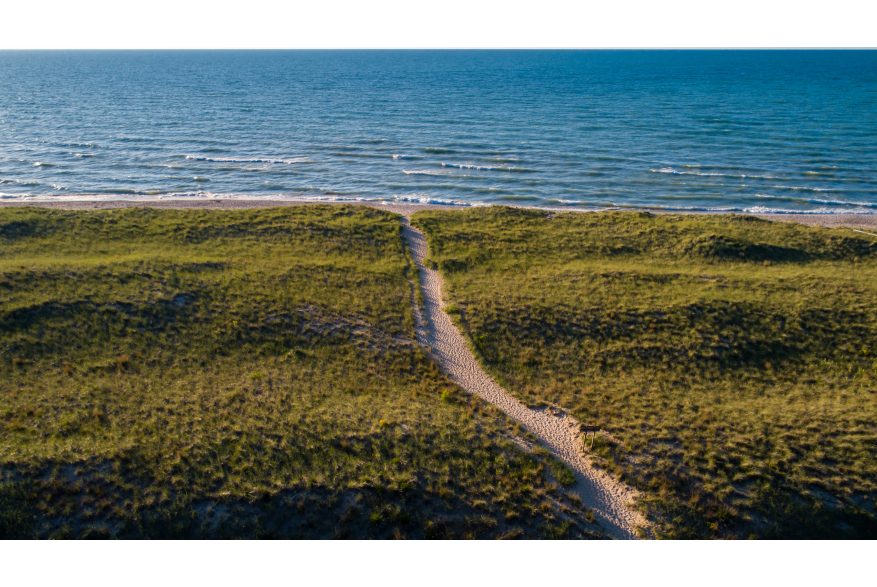Monday Trail Spotlight: Cowles Bog Trail
Even in early Fall, the dunes of Cowles Bog are deep green. The sunlight filtering through the trees made the landscape radiant.
Indiana Dunes National Lakeshore. Photograph by Tom Gill. Some rights reserved.
Today, we're excited to shine a spotlight on one of Indiana's hidden gems—the Cowles Bog Trail!
Located in the picturesque Indiana Dunes National Park, Cowles Bog Trail offers a unique blend of pristine landscapes, diverse ecosystems, and rich history. Named after the renowned botanist Henry Chandler Cowles, this trail is a testament to the remarkable biodiversity found within the Indiana Dunes.
Henry Chandler Cowles (pronounced "coals") was an American botanist and ecologist. Writing in the late 19th century, Cowles was one of the first Americans to use the word "ecology." In fact, he taught himself to read Danish so that he could better understand the Danish ecologist Eugenius Warming's works. Source: National Geographic.
PHOTOGRAPH COURTESY AMERICAN ENVIRONMENTAL PHOTOGRAPHS COLLECTION, DEPARTMENT OF SPECIAL COLLECTIONS, UNIVERSITY OF CHICAGO LIBRARY
What Makes it Special
Scenic Beauty: As you navigate through sand dunes, wetlands, and lush forests, you'll be treated to breathtaking vistas of Lake Michigan—a true feast for the eyes.
Cowles Bog Trail to Lake Michigian. Photo Credit: Smith Donovan
Unique Ecosystems: Cowles Bog Trail is a living classroom, showcasing the transition from sandy dunes to swampy bogs. It's a haven for plant enthusiasts and wildlife lovers.
Dragonfly at Indiana Dunes. Daniel Schwen, CC BY-SA 4.0, via Wikimedia Commons
Scientific Significance: This trail is where Dr. Henry Cowles conducted much of his early work in plant ecology and succession in the early 1900s and remains an important focus for scientific study today.
Have you explored Cowles Bog Trail before? Share your experiences, photos, and stories with us!
If you haven't had the chance to visit yet, we highly recommend adding it to your Indiana trail bucket list.
Remember, it's our responsibility to cherish and protect these natural wonders. Let's continue advocating for the preservation and accessibility of Indiana's incredible trails.




